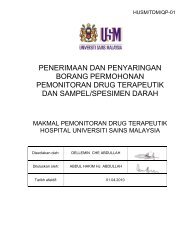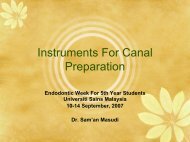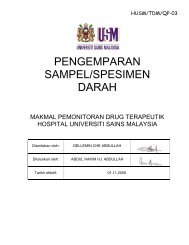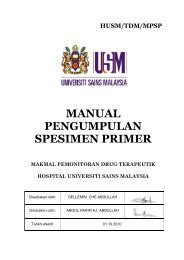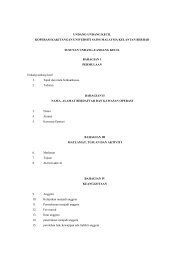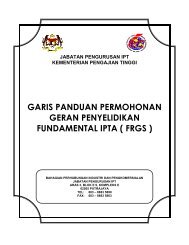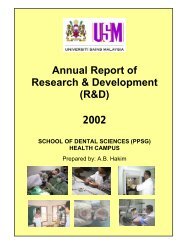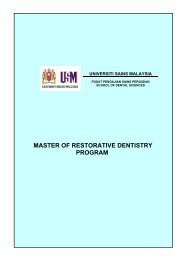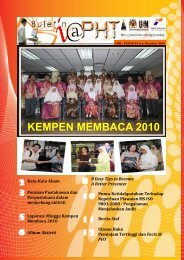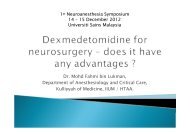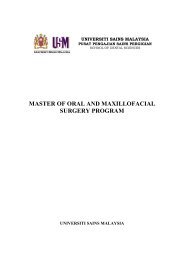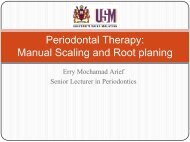Vol 11-R2- Eyelid
Vol 11-R2- Eyelid
Vol 11-R2- Eyelid
Create successful ePaper yourself
Turn your PDF publications into a flip-book with our unique Google optimized e-Paper software.
SRPS • <strong>Vol</strong>ume <strong>11</strong> • Issue <strong>R2</strong> • 2010<br />
Skin<br />
Full-thickness skin grafts contain both an epidermal<br />
and a dermal component. Preferred donor sites<br />
for full-thickness skin grafts used in eyelid<br />
reconstruction have traditionally included the upper<br />
eyelid, retroauricular or preauricular areas, and the<br />
supraclavicular region, with the best match being<br />
from the contralateral eyelid. 22,41,42 The inner arm<br />
and groin are also possible donor sites, but they<br />
should not be considered first because they do not<br />
provide as suitable a match. 22 For those patients<br />
who have undergone previous facial surgery (i.e.,<br />
blepharoplasty or rhytidectomy) or for whom<br />
large skin grafts are needed, Custer and Harvey 41<br />
described using the skin of the inner arm as an<br />
alternative. A large amount of suitable skin might<br />
be obtained from the arm for grafting purposes.<br />
In their study, 52 procedures were performed on<br />
42 patients. Partial graft necrosis occurred in two<br />
patients, and mild asymptomatic graft contracture<br />
developed in four. Steroid injections were<br />
administered to two patients with more marked<br />
graft contracture. Chronic graft shrinkage occurred<br />
in three cases and involved the repair of ichthyosisrelated<br />
cicatricial ectropion, and abnormal hairs<br />
appeared in four grafts.<br />
A split-thickness skin graft is composed of<br />
epidermis only, and the standard donor site is the<br />
anterior thigh. The split-thickness grafts from the<br />
thigh generally have deficient texture, color match,<br />
and a tendency to become pigmented. The graft is<br />
obtained by a power-driven dermatome. The main<br />
application in ophthalmic plastic and reconstructive<br />
surgery is for lining anophthalmic sockets and<br />
orbital cavities. Only in severe burn cases should<br />
this method be a viable choice. 22<br />
Conjunctiva<br />
The conjunctiva provides a smooth moist surface of<br />
contact for the cornea. A similar material is needed<br />
when replacing conjunctiva to prevent corneal<br />
irritation. Defects of the conjunctiva that cannot be<br />
repaired by advancement require a free graft.<br />
Free conjunctival grafts from the same or<br />
opposite eye undergo significant contraction and<br />
12<br />
are difficult to handle. One must take care to<br />
avoid compromising the donor fornix. 3 Mucous<br />
membrane grafts in an anophthalmic socket<br />
contract rapidly. A conformer is therefore to be<br />
kept in the socket at all times for many weeks to<br />
prevent socket contracture. Skin cannot be used to<br />
replace conjunctiva because the hairs on skin and<br />
the squamous layer of epidermis are highly irritating<br />
and potentially damaging to the cornea. 3,43<br />
Oral or buccal mucosa is the tissue of choice<br />
for many plastic surgeons in need of a mucous<br />
membrane graft. It is the most readily available of<br />
mucous membranes that can be grafted in place<br />
of posterior lamellae or eyelid margin resurfacing,<br />
but it tends to contract to approximately 50% of<br />
pre-graft volume. 3,43 It can be cut fairly thin and is<br />
pliable. The graft donor site typically is the inner<br />
surface of the lower lip, but additional grafts can be<br />
taken from the inner cheek or upper lip if needed.<br />
Because mucosal grafts tend to contract, they must<br />
be prepared slightly larger than the size of the<br />
proposed graft site. One must take care to avoid the<br />
vermillion margin of the lips, the gum, and Stenson<br />
duct inside the cheek when obtaining the graft. 22<br />
The harvesting site is outlined with methylene blue<br />
and subsequently incised with a number 15 Bard-<br />
Parker blade (BD, Franklin Lakes, NJ). The graft is<br />
removed with sharp and blunt scissor dissection and<br />
then thinned with scissors. The graft is then placed<br />
in an antibiotic solution until needed to replace the<br />
eyelid defect. Alternatively, a mucotome can be used<br />
to harvest oral mucosa at preset thicknesses varying<br />
between 0.2 and 0.5 mm.<br />
Bowen Jones and Nunes 44 followed patients<br />
with oral mucosal grafts to the orbit for more<br />
than 3.5 years. Fourteen of the study population<br />
were anophthalmic and suffered from contracted<br />
socket. Three patients had eyes but were in need<br />
of additional conjunctiva. In those patients with<br />
eyes who were short of conjunctiva, the defect and<br />
fornices were covered with oral mucosa and a soft<br />
curved-shell conformer was fitted to maintain<br />
the depth of the fornices for 2 weeks. Satisfactory<br />
functional results were obtained. The authors<br />
concluded that the use of the soft shell to cover the



